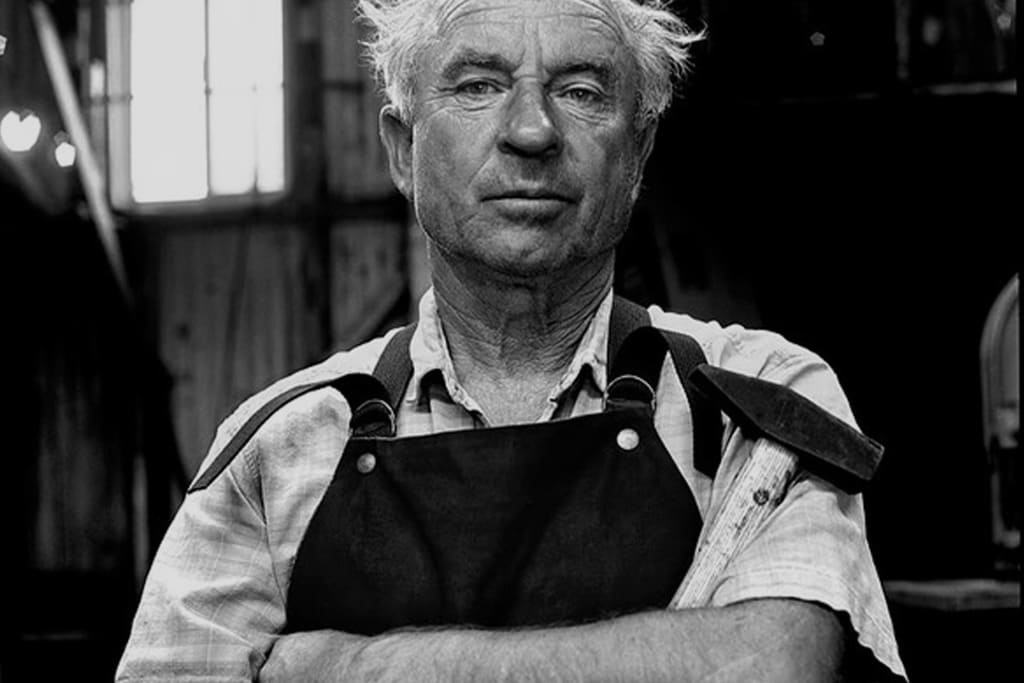How a dumpster diver built a billion-dollar empire with $0.5
No, there was no lottery ticket in the dumpster.

In the 1970s, a mountain climber came across an idea that changed the outdoor clothing industry forever. Yvon Chouinard revolutionized the adventure sports equipment market. This is the story of Patagonia.
The beginning
Yvon Chouinard was born in the year 1938 to a rural family in Maine, USA. He was a member of a family of farmers. Around 1946, his father, along with his family, moved to Burbank, California. Moving to a new place, Yvon had trouble with school. He had difficulties due to the language barrier and other cultural differences. He was considered an outcast and was often bullied. He was a lonely kid and spent most of his time bicycling, fishing, and hunting.
During high school, he had an "attitude" and was often in detention. No subjects interested him much. That's when he came in contact with a local Falconry club and was fascinated by mountain climbing. The excitement and intensity of powering through the vertical cliffs meant that Yvon was instantly hooked. Soon after, Yvon went climbing mountains from Stoney Point to Yosemite with his friends. They went on their excursions mostly on their sneakers or barefoot.
The struggle
One day Yvon saw a man rappeling down the cliff. That is when he came up with the idea of designing more reliable pitons. Yvon started with learning blacksmithing in his parent's backyard. He had no profits in his early endeavor and was surviving at $0.5/day, mostly dumpster diving. So he then partnered up with two of his friends, Tom Frost and Dorene. They completely transformed all the climbing gear and delivered new designs with far superior quality.
Soon after, the environment became a matter of concern for Yvon. He realized that the repeated use of pitons was destroying the mountain walls. So later the climbing pitons were replaced by aluminum chocks.

At first, the climbers were hesitant to replace their gears. Yvon saw this as a challenge and made an effort to win confidence by climbing "El Capitan" only using chocks. Sales soared and soon Chouinard Equipment Co. was the largest climbing gear supplier in the USA.
Birth of Patagonia
Yvon considered himself more of a climber and a craftsman rather than a businessman. In 1970, Yvon traveled to Scotland to climb mountains. There he came across some rugby shirts. He suddenly realized that the collars in these shirts made bearing the ropes much more comfortable. On returning to the US, his fellow climbers saw his shirt and asked where they could get one. This sparked the idea of manufacturing and selling rugby shirts for climbing purposes.

Back in the early days of the climbing sport, men usually did not wear colorful outdoor clothing. Climbers would wear white dress shirts and cut-off chinos. The idea of using colored rugby shirts was heavily embraced by climbers. This was a step that would later revolutionize the outdoor clothing industry.
Yvon wanted to associate his clothing line only with top quality and environment. So he launched this line under the name of a different company. In 1973, Patagonia was born, named after the mountain regions in Southern Argentina. Yvon didn't consider himself to be a businessman but knew that constant research and development was the key to the survival of Patagonia. In 1978, Patagonia came up with its first technical product, a rain jacket. This rain jacket was made from highly durable and water-repelling material while being flexible enough to move freely.
Some of their innovative products are the Synchilla and Capilene fabric. Soon, Yvon decided to launch new products based on these fabrics. It was a huge risk as the older products made up 70% of the total sales. However, Yvon abided by his mantra, "I immediately take a step forward and see how that feels. If it feels good, I take another step. If it feels bad, I take a step back.". This determination to innovate and protect the environment helped Patagonia surpass the $1,000,000,000 mark in 2019.
Present and future
Patagonia is focusing on reducing carbon footprint and keeping the environment as its top priority so much that it discourages customers from repeatedly buying its products. Patagonia has a "Worn Wear" clothing line that sells only used and repaired clothing. Patagonia has a history of only working alongside companies that share its vision of helping the planet.
Read more about Patagonia's impact on the planet at Patagonia.
Patagonia's commitment to building a more sustainable and eco-friendly brand influences customers to be a part of it. Also, a percentage of their annual sales is donated to local environmental clubs. Yvon said in an interview, "I know it sounds crazy, but every time I've made a decision that is best for the planet, I have made money.". He came to be known as a rebellious businessman, challenging the traditional ways and asking his employees to "drop work and go surfing when the surf comes up".






Comments
There are no comments for this story
Be the first to respond and start the conversation.